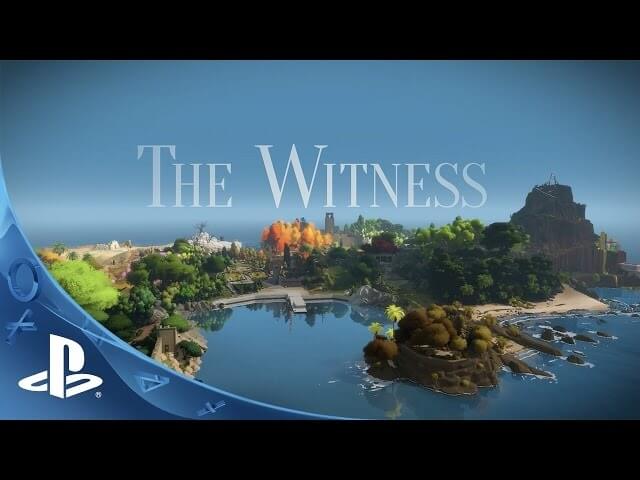The Witness is Jonathan Blow’s rebellion against the tyranny of adventure games

Welcome to our weekly open thread for the discussion of gaming plans, nagging questions, and whatever else we feel like talking about. No matter what the topic, we invite everyone in the comments to tell us: What Are You Playing This Weekend?
A few weeks ago, I had the opportunity to spend some time playing an upcoming game about a lone wanderer who emerges into a strange, desolate land. It’s filled with all sorts of mystifying sights—the remnants of what, and who, came before—so many, that doing everything there is to do and unraveling this place’s mysteries could take upward of 100 hours, according to its creator. It’s called The Witness, the next game from Jonathan Blow, designer of Braid, and if I had my druthers, I’d be tearing into its enigmatic island all weekend. Wait—what did you think I was talking about?
All joking aside, playing The Witness in concert with some of 2015’s bulkiest games—Metal Gear Solid V, Assassin’s Creed Syndicate, Fallout 4—reveals a slightly more unexpected ambition for Blow’s long-gestating project. Like all of those examples, and what seems like 90 percent of big-budget releases these days, The Witness is an open-world game. But instead of running from floating icon to floating icon in search of your next violent act, you’ll spend much of those 100 hours staring at in-game TVs and solving puzzles. The bizarre island you stumble into—a menagerie of biomes and architecture where a patch of New England fall might neighbor a Shinto shrine and its cherry blossoms—is relatively small, but it’s dense with puzzles and landmarks. If you’re tired of banging your head against some incomprehensibility, you can just walk 20 feet in any direction and find something new to explore. It’s an intriguing two-birds-with-one-stone approach that tackles a couple of disparate pet peeves: bloated, boring open worlds and the tyrannical, deflating linearity of the game’s immediate inspirations.
For Blow, The Witness is an attempt to rethink and modernize classic adventures games. Unlike its most obvious comparison, Myst, the puzzles don’t rely on poring over an image to find the few parts of some complicated machine you’re capable of manipulating. You just walk up to a screen, press a button, and the puzzle plays out in a maze on the monitor. According to Blow, there are more than 600 of these panels on the island, and every single one contains some variation on drawing a line through a maze. How the hell do you make a game full of mazes last for dozens of hours? You constantly add new twists—colored dots that the line has to pass through on its way to the goal, controlling two lines at the same time, black and white blocks that your line needs to cordon off into separate groups. Each wrinkle is introduced in a distinct section of the island, with a series of panels that progresses from the basics to flabbergasting extremes or combinations with previous challenges.
Blow has said that The Witness is about recreating that split-second where we go from completely flummoxed by what we’re looking at to total understanding, and it’s definitely a tangible feeling that the game evokes at a constant clip. From my experience, which was limited to around 90 minutes, the hardest part is figuring out what each new maze element means and how it works. You’re never provided with any sort of guidance, but once that realization snaps into place, it becomes a permanent piece of your puzzle-solving arsenal that you’ll need to pull out again and again—or maybe use at a terminal you came across earlier but abandoned because it’s maze was too daunting. That’s another of its predecessors’ rough edges The Witness smoothes away. You don’t lug around an infinite backpack full of crowbars and cranks to fix your problems. Your inventory is knowledge.
But the island itself, and what you’re doing there, is the biggest puzzle of all. Even in my short time with the game, it’s clear that Blow’s appreciation for allowing players to reach that powerful moment of puzzle-solving clarity on their own has shaped The Witness’ approach to filling in its finer details. The island’s locations are littered with what look like statues, but they’re not very statuesque—more like people who’ve been frozen in time while going about their day or in some moment of duress. This place has a history, spaces that have been lived in and abandoned. It’s eerie and immediately both confusing and gripping. It was enough to pique my interest, but will it be enough to pull players through hundreds of mazes? That’s a puzzle we won’t be able to solve until the game is released on January 26.